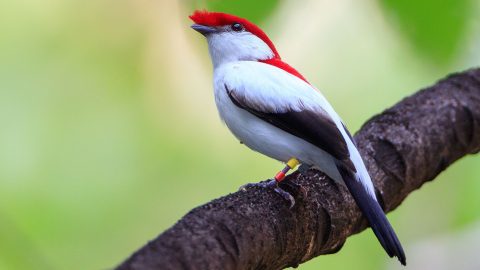The Araripe Manakin, Keeper of the Spring Waters
Photography by Gerrit Vyn; story by Gustave Axelson
April 2, 2018From the Spring 2018 issue of Living Bird magazine. Subscribe now.
To see one of the most exciting ornithological finds of the past 20 years, I had to stand in line. In front of me stood a man in a tank-top and flip-flops. Behind me were two women with beach towels slung over their shoulders. Beside them were giddy children hopping up and down, about to burst with anticipation.
I was giddy, too. But not for the same reason. When the water park opened for business at 10 a.m., the line filed through the turnstile and down the walkway. At a little thatched hut selling flippers and swim goggles, the flip-flop crowd funneled left, toward the waterslides. I bore right onto a clean, paver-stone pathway enshrouded by jungle trees.
Almost immediately, a friendly song chimed from the trees: too-too, toot-toodle-oo! My companion, Brazilian biologist Alberto Campos, whispered one word: Soldadinho!
Soldadinho do Araripe is the Brazilian common name for the Araripe Manakin. First described in a scientific journal in 1998, the soldadinho (or “little soldier”) quickly made the most-wanted list for globe-trotting birders touring Brazil. As an isolated endemic, it’s a rare get for any life list—a manakin that in all the world lives only in a 30-mile-long forested stretch in the northeastern state of Ceara, along the eastern side of the Araripe plateau. The bird’s true appeal, though, is not its rarity, but its striking beauty.
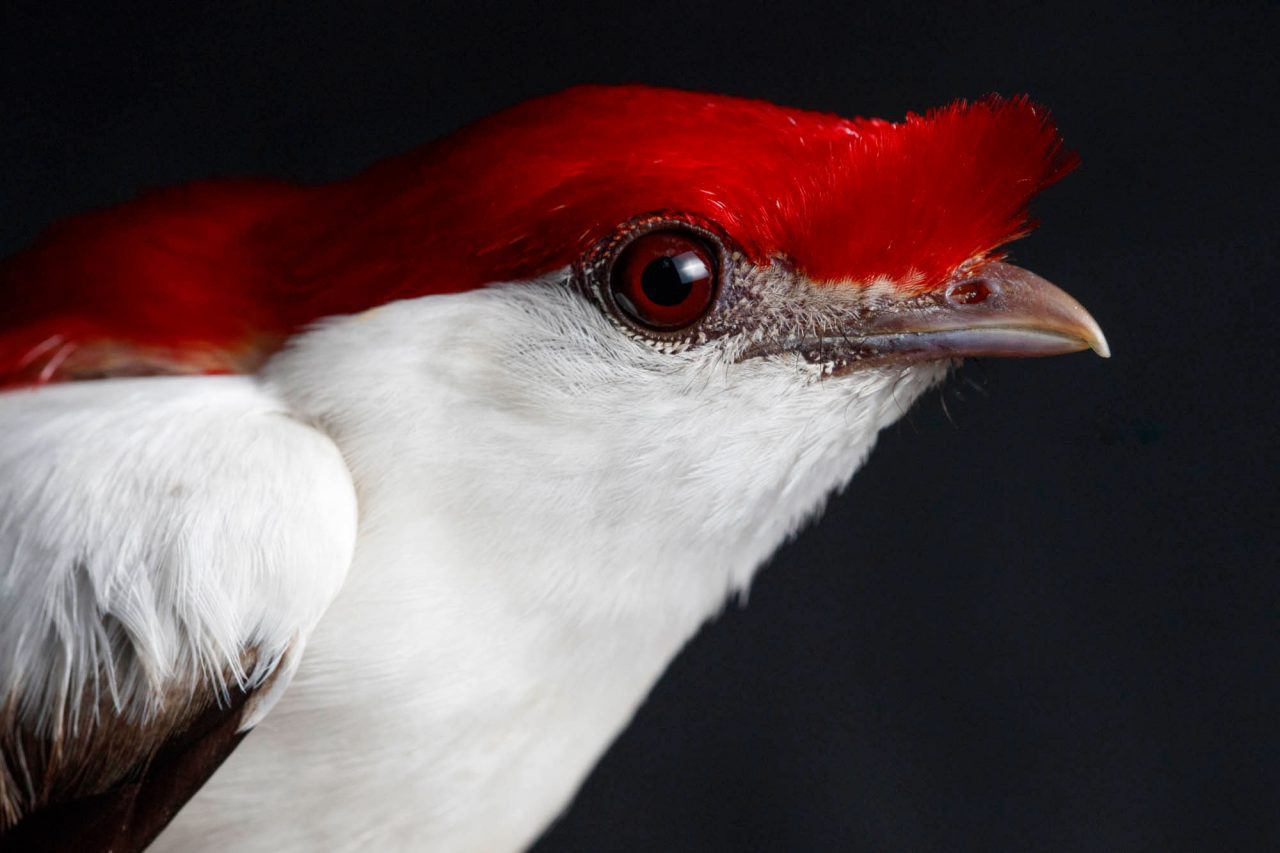
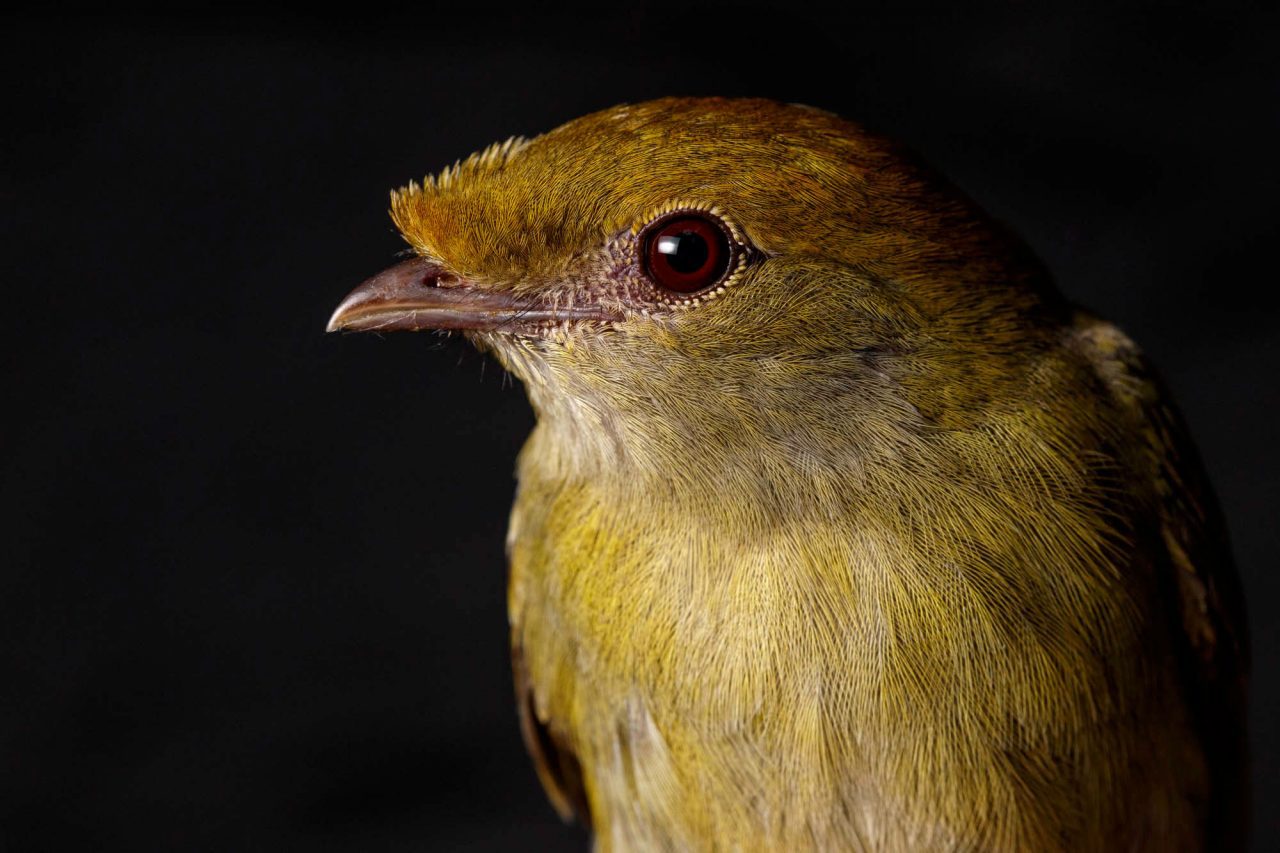
Another cheerful song burst from the trees, and a songbird’s silhouette flashed to a bare branch overhead. I glassed it through binoculars to see a bird cloaked in bright white plumage, with a dazzling crimson headdress—indeed clad in an officer’s regalia. The soldadinho looked left, then right, granting me a view of its profile and its blazing red pompadour. Looking at this brilliant bird is a bit like looking at the sun; red spots lingered in my eyes, emblazoned, for a few moments after the manakin flew away.
A gurgling brook flowed alongside the paver-stone path where I stood. About 500 feet upstream, there was a grotto that hid a spring, the source of water for this moist ecosystem, and this water park. Herein lies the conflict for soldadinho, the reason it’s an IUCN Red List critically endangered species. Both bird and people need this water: the manakins nest by the water and only live in wet forests; the people tap into the water for all their human endeavors—agriculture, urban growth, water parks.
But the manakin and the people here are not adversaries. In fact, the people celebrate the bird, and the bird may be the best hope for keeping the water flowing for the people.
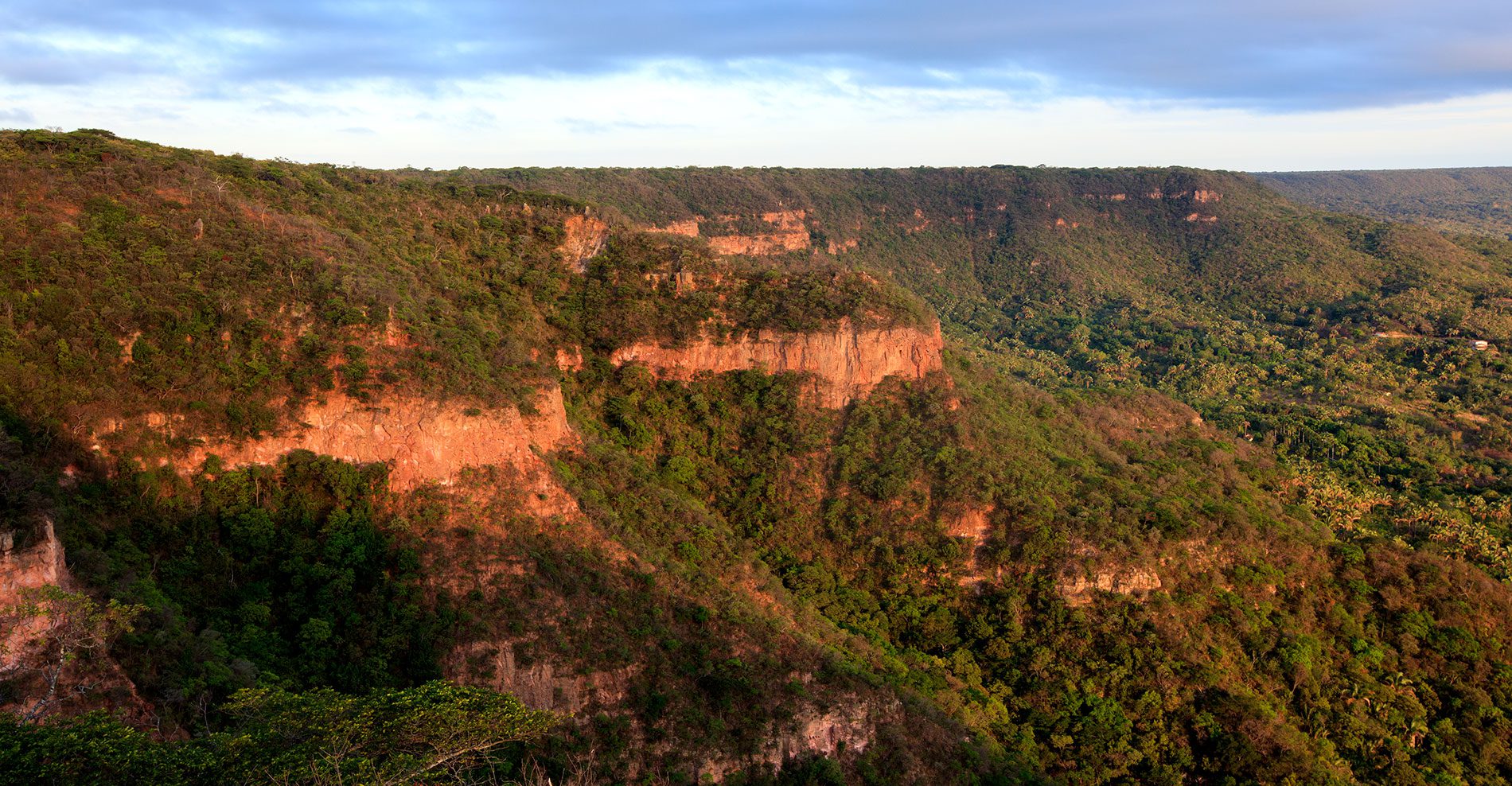
A Fire-Crested Bird
Alberto Campos had his own luminous experience with the Araripe Manakin back in 2003, when he drove eight hours from the regional capital of Fortaleza to investigate reports of a new bird species discovered in the Chapada do Araripe, or Araripe plateau.“The first time I put my eyes on it … it shines, you know? That crest shines like a red bulb,” he recalls. “It’s an amazing, memorable experience.”
The first time I put my eyes on it … it shines, you know? That crest shines like a red bulb.
~ Alberto Campos
At that time, Campos was a biologist who had cofounded a conservation group called Aquasis on Brazil’s northeastern coast to help endangered marine animals such as dolphins and manatees. Now, a decade and a half later, Campos was taking me on a tour of his group’s on-the-ground conservation efforts for the Araripe Manakin, 300 miles away from the ocean. If it seems odd that a marine nonprofit would become the most ardent advocate for a forest songbird, the explanation lies in the species’ biology—because this bird relies on water every bit as much as a manatee.
Natural sounds, nothing spoken.
End of Transcript
“We have found nests not exactly on top of running water, but really, really close to it, right above,” says Campos. He says that along streams grown over with vegetation, the birds construct small nest cups among the vines and branches that dangle just above the stream’s surface.
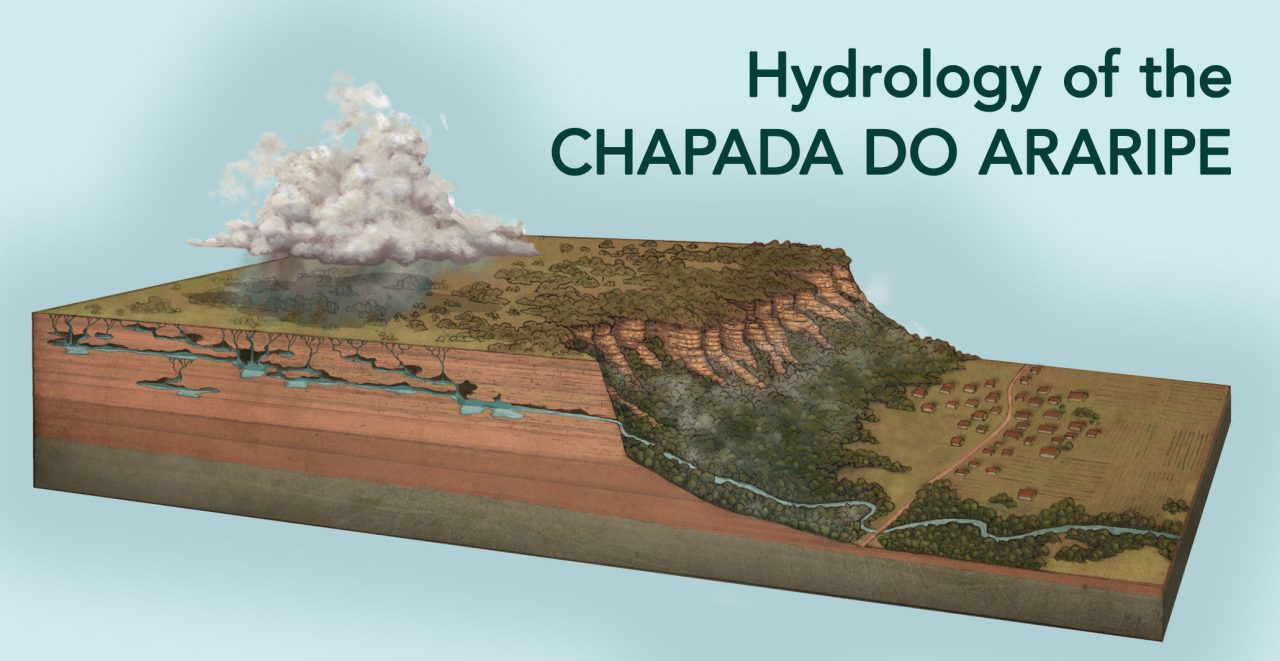
And yet, this wet-forest manakin lives in the caatinga biome, a semiarid region about 7 degrees south of the equator. To be precise, the Araripe Manakin lives in a moist-forest oasis in the middle of a scrub-brush landscape, a topographical peculiarity that’s like a Hawaiian cloud forest dropped into the sagebrush country of Utah. The moisture comes courtesy of the chapada, an old Portuguese word for plateau. The tabletop of the chapada acts like a 4,000-square-mile rainwater catch basin. Whenever rain hits the ground on the plateau, it slowly percolates into the soil and collects into underground pools. The water then migrates sideways, reemerging as hundreds of natural springs on the plateau’s side to feed a humid forest habitat. It may take thousands of years for raindrops to funnel from the chapada’s dusty, scrub-brush top to the slopeside gushing founts amid gallery forests.
Araripe Manakins only occur in these wet forests on the side of the Chapada do Araripe, a global range about half the area of Manhattan. Because this bird is tucked away in a relative postage stamp of South American forest, it wasn’t described by science until the very end of the 20th century—though it was almost discovered twice before. In 1860, a Brazilian zoologist from the natural history museum in Rio de Janeiro collected 4,000 specimens of various wildlife species on a biological survey of the Chapada do Araripe. His collection almost certainly included an Araripe Manakin skin, but today that skin may be lying on the bottom of the ocean. The expedition’s boat was lost in a shipwreck on the return to Rio. Then in 1930, a German crew of geologists, entomologists, and ornithologists made a collecting sweep through the area. But that collection at the University of Freiburg was bombed out in World War II.
They warned young Francisco … not to make this bird angry, because it was o dono do agua—owner of the waters.
As is often the case, locals knew about this bird long before scientists discovered it. An old-timer who lives in the city of Crato, at the bottom of the chapada, tells of the stern warnings he encountered as a young boy prowling the forested slopes with his machete in the 1950s. Now 77 years old, Francisco Xavier Rodrigues says that in those days people up in the hills told of a red-headed bird that lived at the springs, the galo de nascente (or cock of the springs). They warned young Francisco not to shoot at this bird with his slingshot, not to make this bird angry, because it was o dono do agua—owner of the waters. If the bird is disturbed, they would say, the water will stop flowing.
Local talk of a strange red-headed bird attracted a college biology student named Weber de Girao Silva to the Araripe plateau in 1996. Silva was invited by his professor, Artur Galileu Miranda Coelho of the Universidade Federal de Pernambuco, to go birding near the grotto. There was no water park here then, no buildings or paved pathways, just a dirt trail along a forested stream.
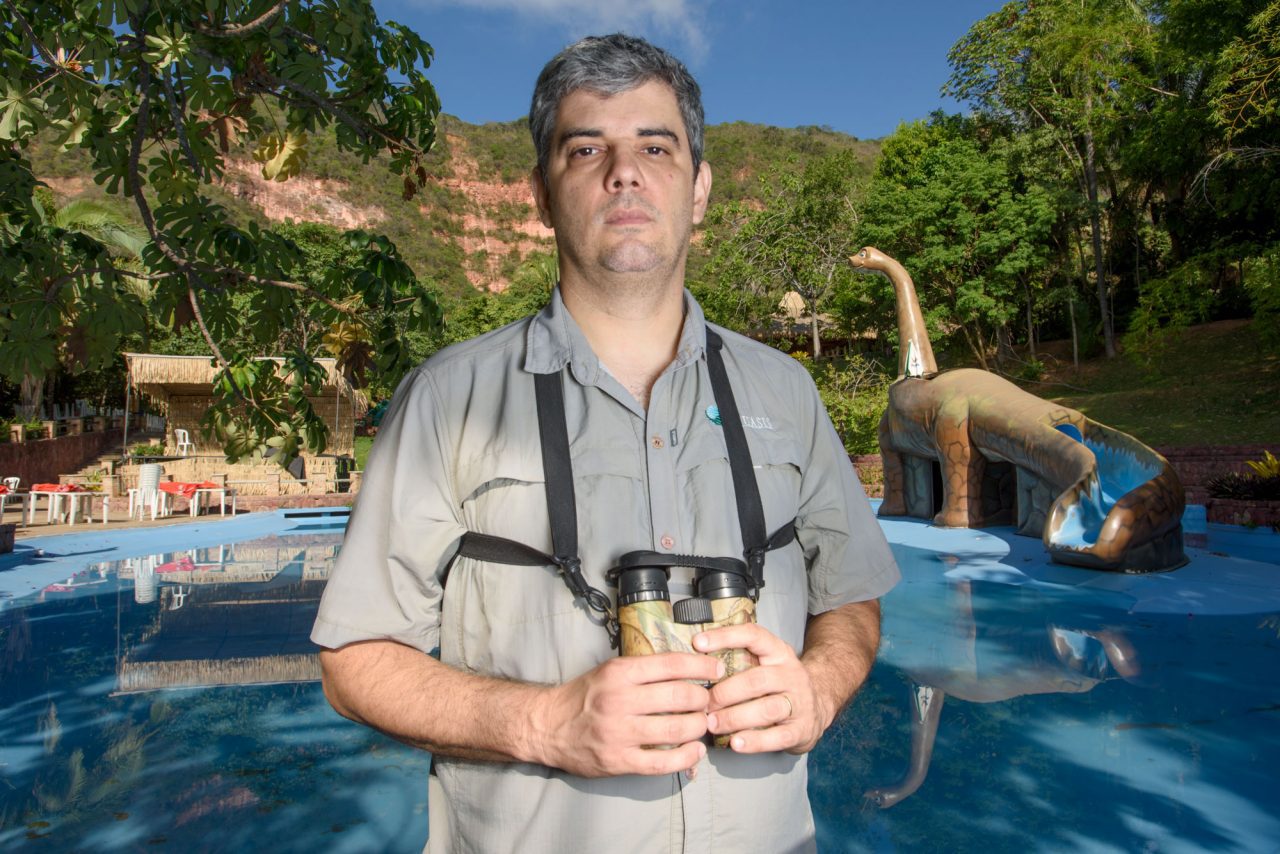
“Let’s go to the exact spot,” said Silva when he joined me at the water park. Today he’s a middle-aged ornithologist with salt-and-pepper hair. He hopped over a guardrail, off the paver-stone path, and scurried uphill, stopping about 100 yards up the slope above me to brace himself against a tree. A tangle of jungle vines cascaded down the rock face behind him. When Silva leaned against that tree two decades ago, he recorded science’s first official sighting of the Araripe Manakin—the one that stuck.
“We saw a white bird fly onto a branch,” Silva reminisced about the day that changed his life. “In this moment, the sun was behind the bird, and the light on the crest lit up like a lamp … o fogo.” (Like fire.)
“And Galileu asked me, ‘What the hell is that?’ I answered, ‘This is not a usual thing.’” Then Silva glanced down at his arm: “My hairs are raising up, right now, as I tell this story!”
News of the discovery made the local newspaper, but the article ended on this ominous note:
Although unknown by science, the species is already threatened. The place where this specimen was found will be transformed into a water resort, laments Galileu.
Lament was all the college professor and his student could do. The water park developer was a powerful local mayor. The park was built in 2000, with the stream from the grotto supplying all of the water for the pools and slides.
Silva is still troubled today by how it all went down, the construction of a water park at the discovery site of a new bird species. He felt powerless to stop it.
“I was 20 years old,” he says heavily today. “It was a gamble.”
It was Silva who called Campos at the nonprofit Aquasis and asked about adding the Araripe Manakin to their endangered species program. After seeing the bird himself, Campos agreed and hired Silva as the chief ornithologist on a project to save the bird.
A big part of that project has been local outreach. Aquasis has conducted several public meetings on Araripe Manakin conservation—meetings that have been attended by representatives from Arajara Park, the park that emerged from where the bird was discovered.
Arajara is the only one of five water parks in the region to get involved in manakin management, making the trail to the grotto into a private forest reserve and maintaining the native vegetation of fruiting trees and shrubs that are the mainstay of the manakin’s diet. Arajara has even adopted the bird as one of its attractions, hosting birding tour groups and selling Araripe Manakin T-shirts in the souvenir store.
“If we can put people in touch with this bird, with the nature, we want to give people that experience,” said Caroline Sambaio Saraiva, a daughter of the now-deceased park developer. She currently assists her mother in managing Arajara. “There are many water parks in the world, but you cannot copy this forest. I think we can offer both, a water park and environmental sustainability.”
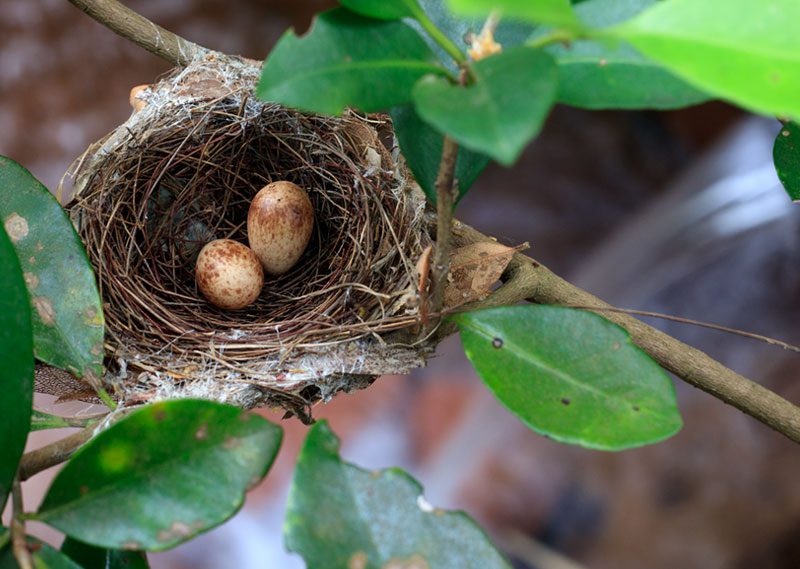
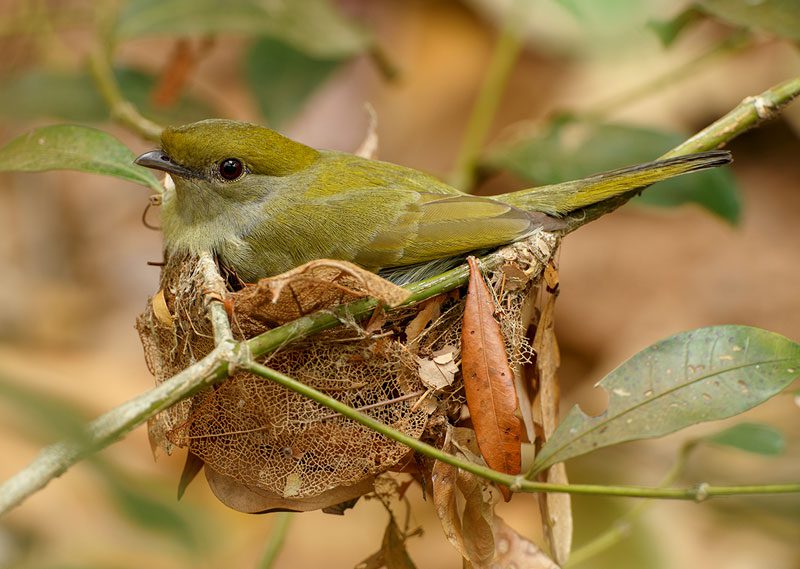
Today Araripe Manakins persist in the park, their cheery songs a testament to the species’ adaptability as long as accommodations for its habitat can be made. And even Campos admits, Arajara is a great place to see this bird.
“In other forests, Araripe Manakins stay up high in the canopy,” he says, but with the elevated walkways here, “they come right down to see you at eye level. It’s perfect for photos.”
I spent that afternoon luxuriating in Araripe Manakins all over the trail—watching one land in a tree branch below the walkway so I could see how the crimson ribbon runs down its back, listening to a constant toodle-oo chorus from the treetops. Finally I headed with Campos over to the restaurant hut for cheese tortillas and a beer. Pop music thumped in the background, punctuated by happy shrieks from splashing kids.
“Some people who favor the environment want to remove this place, but that won’t work,” Campos said frowning. “BUT, if we could stop building water parks … a freeze, no more parks. And manage the ones that are here sustainably. We can live with that.”
Campos took a sip of his beer and watched a little boy shoot down a waterslide and out of the mouth of a dinosaur statue. He smiled: “This park makes people happy.”
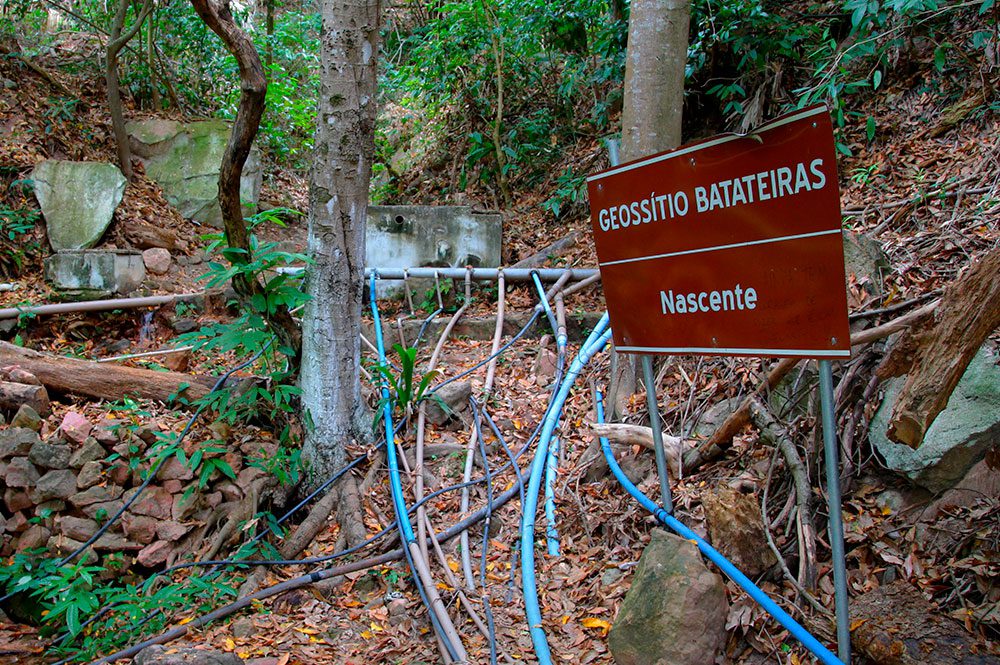
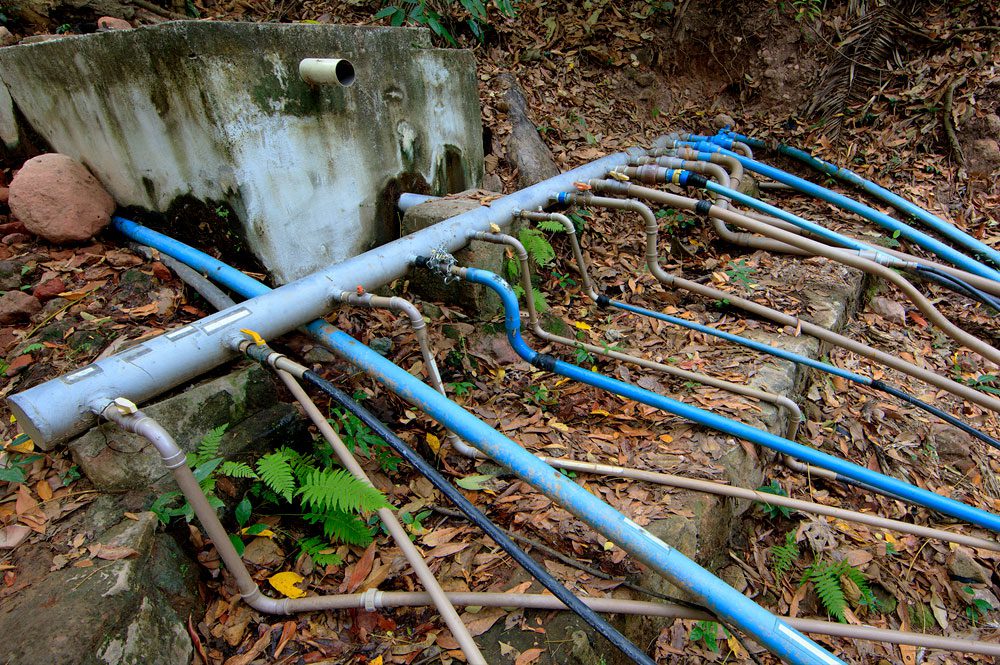
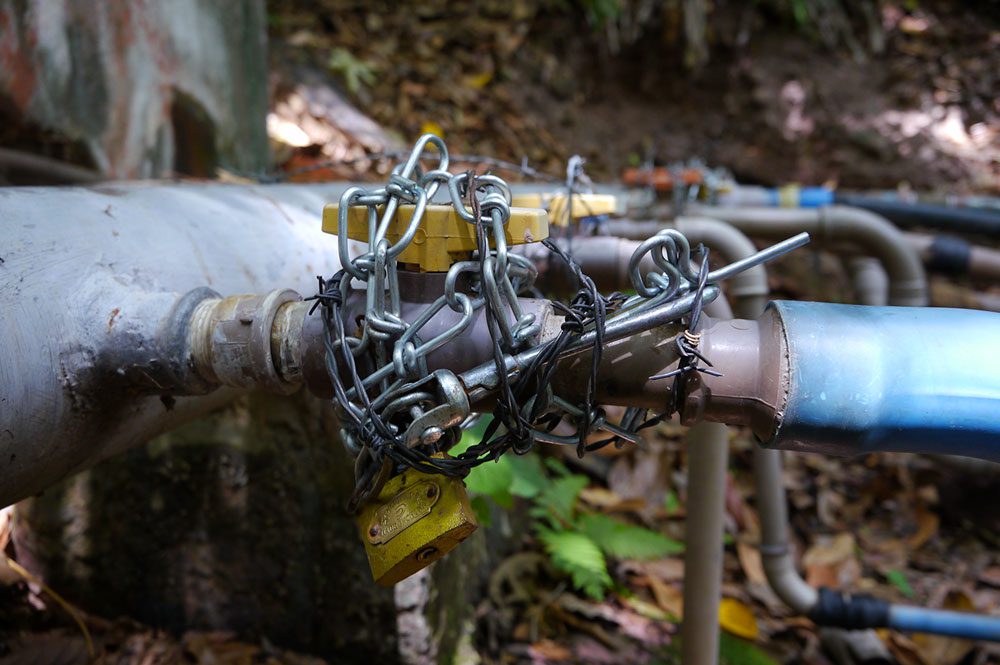
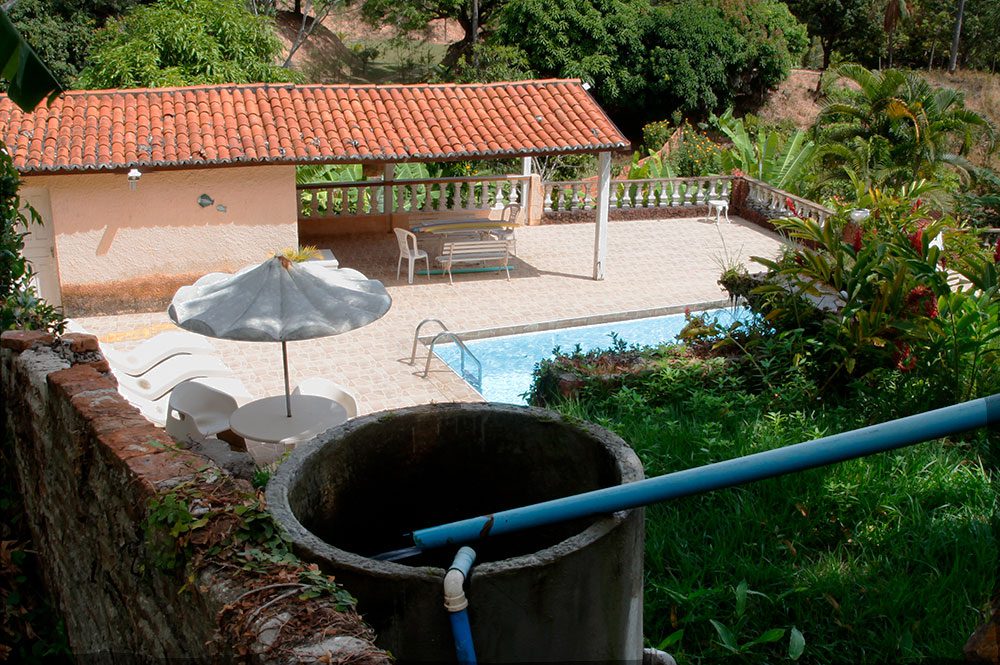
“The General Is Saying to the People, ‘Protect the Water!'”
Water parks are not the most pressing threat to the Araripe Manakin.
To show me what’s sucking the bird’s moist-forest habitat dry, Campos took me to what was once the largest freshwater spring in all of the Araripe plateau, the Batateiras Nascente.
In the 1850s, Batateiras was a rushing river. Today, it’s a tangle of PVC and rubber pipes sprouting out of aged concrete cisterns. Some of the pipes are brown; some blue, some black. Together, they snaked down a dry streambed toward the city of Crato.
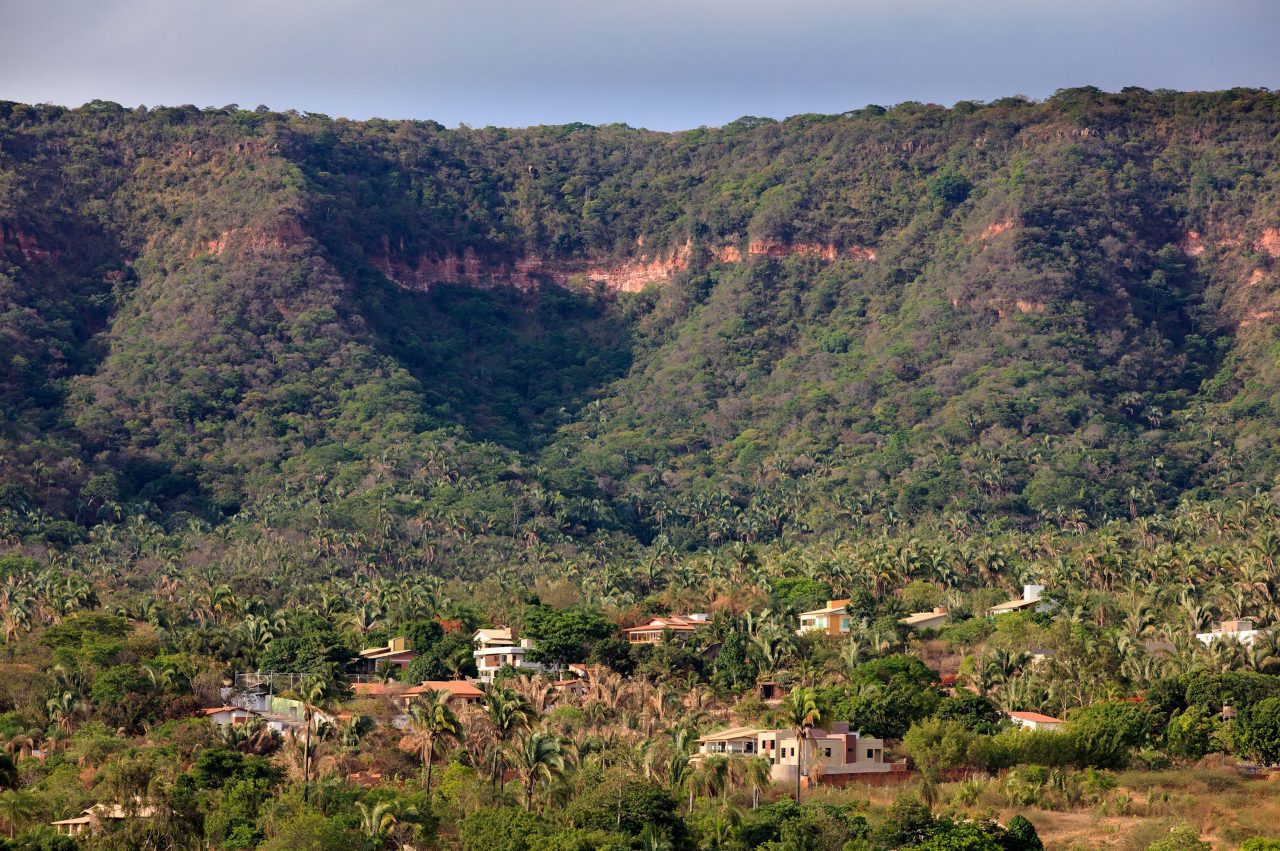
It was a ramshackle setup. Many of the pipes had sprung leaks; miniature water fountains sprayed up from tiny punctures. Many of the taps at the cistern were wrapped in chains and locks.
“Fifty years ago, there was a lot of water conflict right here,” Campos said. “People killed each other because somebody turned off his tap.”
Campos picked his way among the pipes and bent down to get a closer look at the biggest one, about the diameter of a flagpole. He frowned and adjusted his white baseball cap, which he wore the entire week I spent with him. I followed one PVC pipe with my eyes, a skinny blue one that veered from the cluster and through the gate of a walled residence just below the spring. Inside was a simple white stucco house with a dirt yard. The wall was crowned with barbed wire and spiked with jagged fragments of broken glass.
But from behind the wall, I could hear the gentle singsong of children’s voices: um, dois, três…
They were kids counting off for hide-and-seek, probably with parents who just want water for their family.
You can tell who gets the water by the size of the pipe. The large pipes go to wealthy landowners, small pipes to poor families. You can see the entire social strata right here.
~Alberto Campos
“You can tell who gets the water by the size of the pipe,” said Campos, standing up after inspecting the cluster. “The large pipes go to wealthy landowners, small pipes to poor families. You can see the entire social strata right here.”
This is Campos’s adversary in the campaign to save the Araripe Manakin, and it is not as simple as a single oil company, like the one he defeated in court on behalf of manatees. At Batateiras and springs all across the Araripe plateau, Campos and Aquasis are facing off with societal forces.
Agriculture is the biggest draw on the water in this region. An estimated 70 percent of water demand is from farms, mostly for irrigation on banana plantations. Residential water is estimated to account for about 20 percent, with the remaining 10 percent taken by industry, including water parks.
By law, 20 percent of the water flow from springs should be off limits to humans so the water can flow freely and provide environmental benefits, such as ambient moisture for forests and habitat for wildlife. But that’s not happening at most springs in the Araripe plateau, certainly not here at Batateiras.
Jose Yarley Brito is the man nominally in charge of the water at Batateiras and many other springs in the Araripe. He is president of the Sociedade Anônima de Água e Esgoto do Crato, the city’s water management agency. But he readily admits his charge is to manage water for people, not forests or manakins.
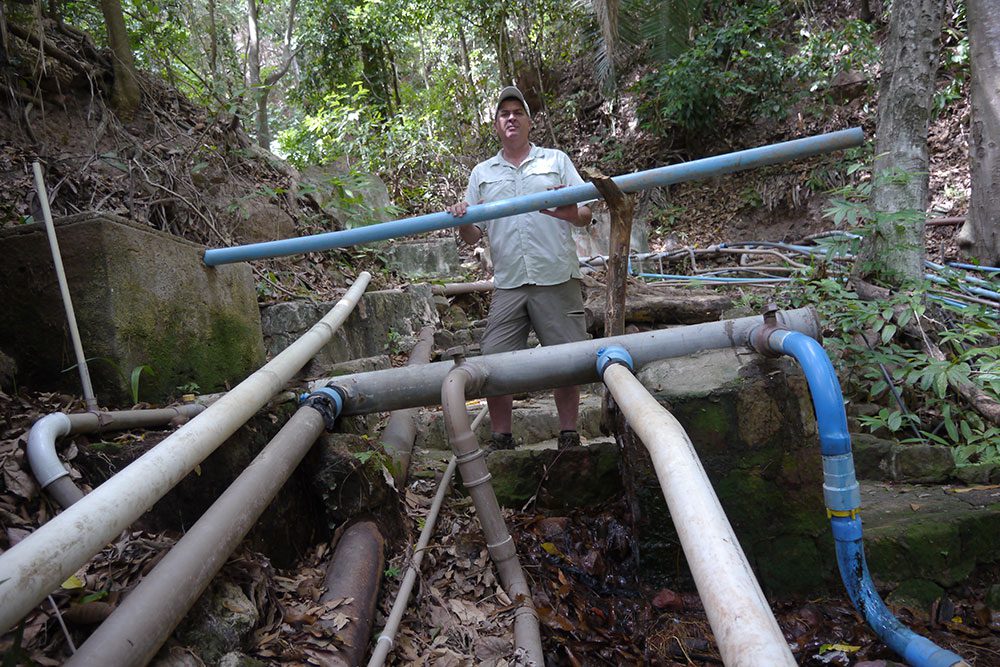
“Legally, my priority is the water supply for humans,” Brito said. “The bird is not my priority. But, I worry about the bird, too.”
Brito’s dilemma is that his agency was established after these tangles of pipes had already taken root at Crato’s springs. And, Campos says, Brito’s agency lacks the resources for proper water regulation and enforcement.
Year by year, there are more and more people who want the water. Crato’s population has grown by 34 percent over the past two decades. Brito shrugs his shoulders at what his agency can do in the face of this growing base of water consumers: “If more people are moving upslope for their homes, that can’t be stopped. The only person who can stop the population growth in Crato is God.”
Across the Araripe plateau, the springs supply water not just to Crato, but also to two other nearby towns, the regional metropolis of Fortaleza 300 miles away, and the neighboring state of Pernambuco (courtesy of private companies that truck the water across state lines).
Aquasis estimates that more than 2 million people depend on the Araripe’s springs for their livelihoods. And a crisis may be looming, because the water is disappearing. Over the past 100 years, hundreds of water springs in this region have lost an average of 75 percent of their outflow. Batateiras has lost 36 percent of its water flow over just the past 12 years.
And yet, Brito earnestly believes that there is enough water for everybody. The problem, he says, is that the water use is not sustainable. Bananas are a very thirsty crop, Brito says. He suggests farmers could switch to other crops that would not take so much water. And even if there are more and more people, they can learn to be wiser with their water.
On this point, Brito hopes that the bird that is not his priority can do his agency a favor. He hopes the story of the Araripe Manakin, an endangered bird utterly reliant on free-flowing water, will move people to reconsider their water use, and open their minds to water management.
Brito is a cheerleader for Aquasis’s efforts to gain attention for the bird’s conservation plight.
“He is a messenger to us from the springs,” Brito said. “He is called the soldier, but we should give him a higher rank. Make him a general. And the general is saying to the people, ‘Protect the water!’”
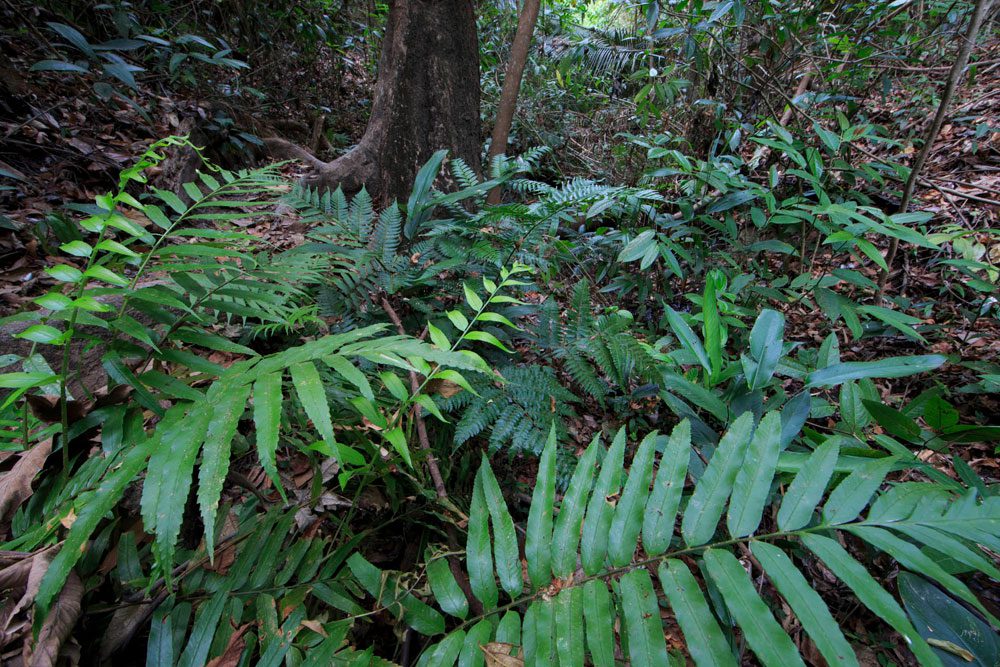
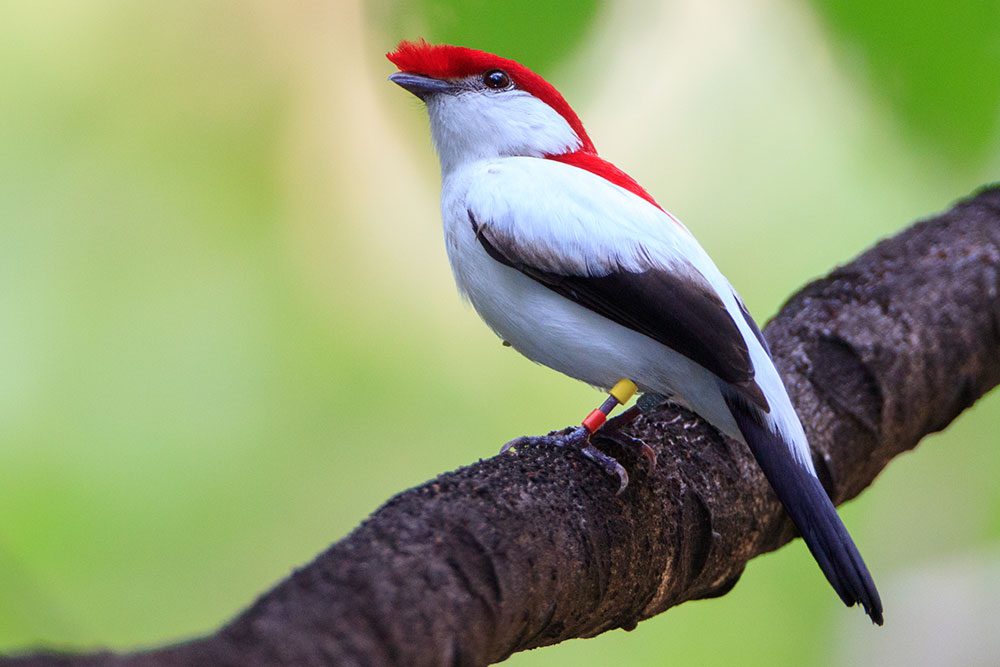
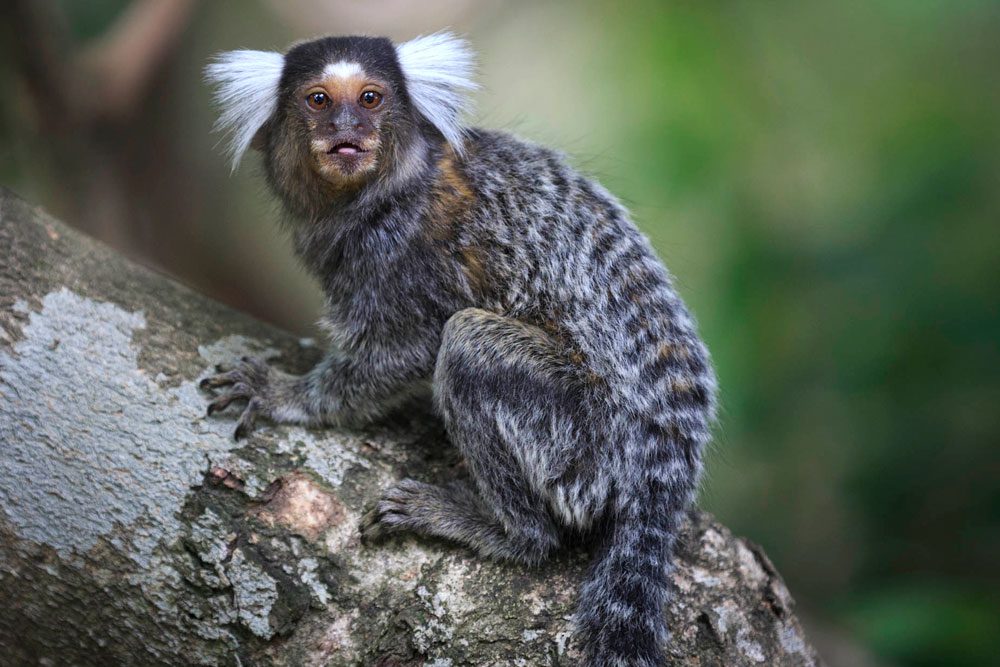
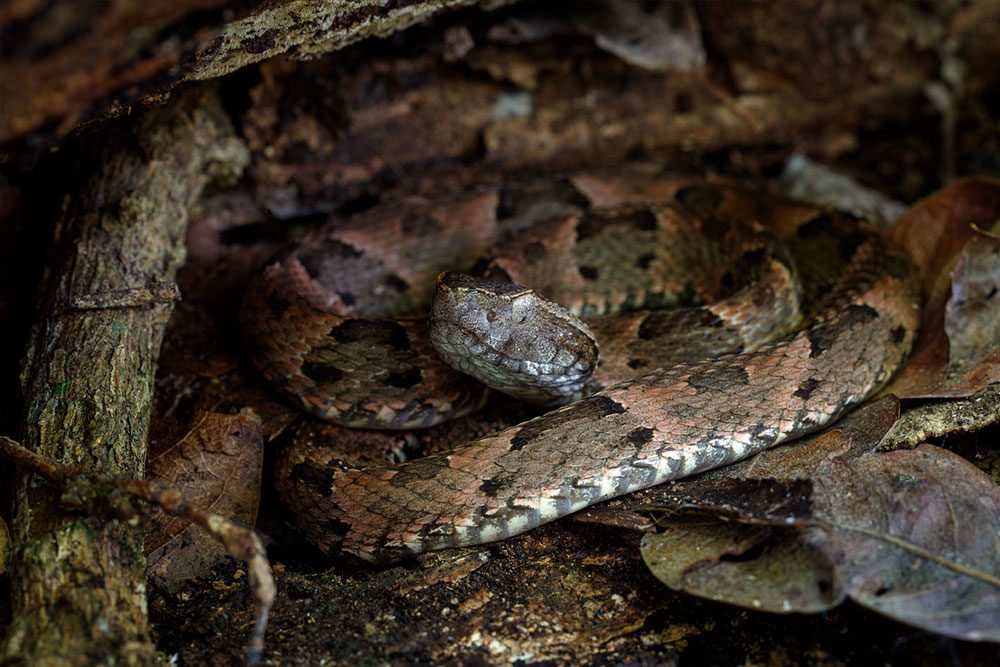
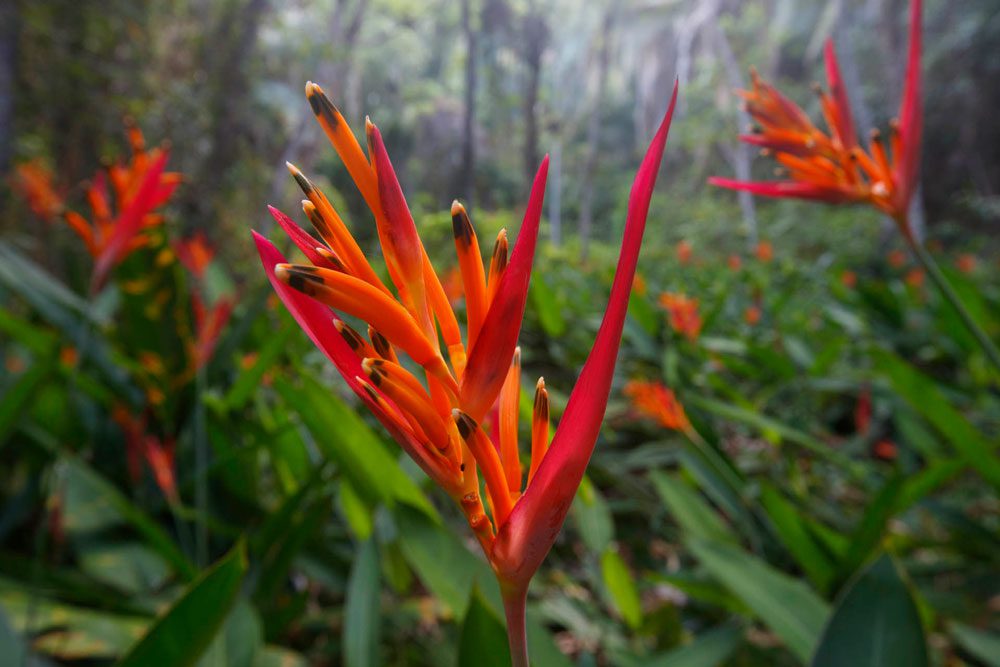
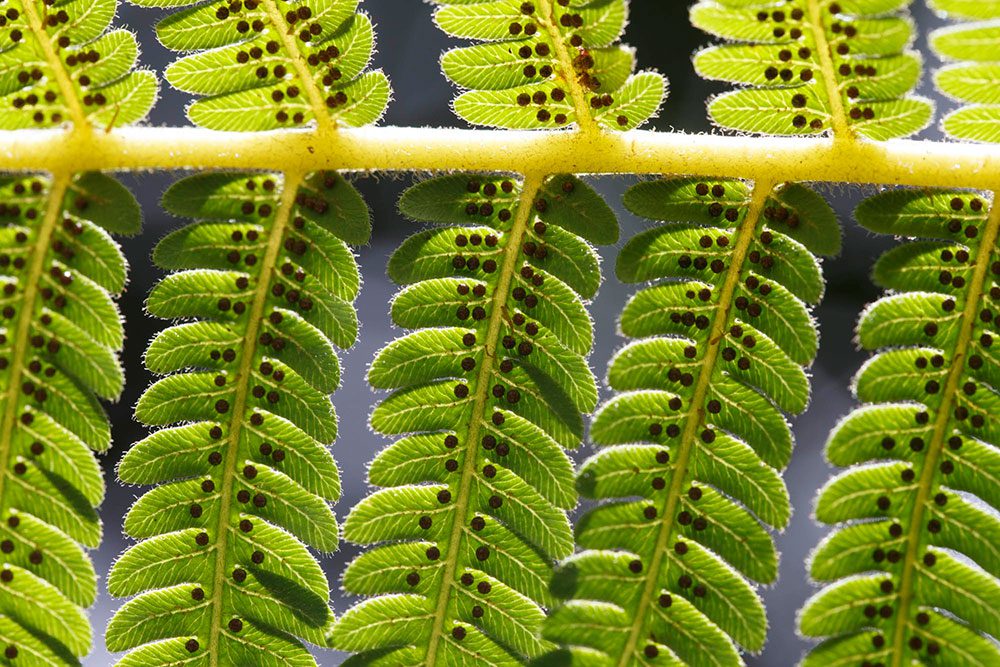
A New Water Model Brings Hope to the Ecosystem
For a more sporting Araripe Mankin experience—something truer to the bird than the amusement-park convenience at Arajara—Campos arranged for me to visit Aquasis’s Oasis Reserve.
The 300-acre reserve was established with funding from the Washington, D.C.-based American Bird Conservancy, which took the lead in underwriting two land purchases: one in 2014 that protected a breeding area for Araripe Manakins, and another in 2016 that doubled the size of the reserve. ABC also provided funds for habitat rehabilitation on this abandoned sugar farm, including the planting of more than 10,000 tree saplings. More than just a reserve, Oasis is also a kind of experimental forest.
To a first-time visitor from above the 40th parallel north, it’s a jungle that gives off the unnerving vibe that it’s trying to kill you. The deeply gouged dirt road winding up toward the reserve is a favorite hangout of sunbathing boa constrictors. Once inside the darkened forest, there are trees with spikes growing from their trunks. And more snakes: Along the hiking trail, a mottled brown fer-de-lance—one of the most feared Neotropical pit vipers—was so camouflaged and neatly coiled beneath a tree root that I never would have seen it until it was too late.
Thankfully, George saw it. George Leandro Barbosa is another Aquasis staffer who served as my guide at Oasis. He once lived among indigenous peoples in the Amazonian interior. And he, too, wore a white hat, a bucket fishing hat. When I first arrived at the reserve, Barbosa checked to see that my snake gaiters were properly secured, then we set off into a jungle thick with vines that dangled from the treetops to the forest floor.
We stuck to trails that ran alongside levadas, small irrigation ditches that date back to the sugar plantations of the 19th century. A market crash in the 1980s drove sugar out of this area, but the levadas still carry water to local farms.
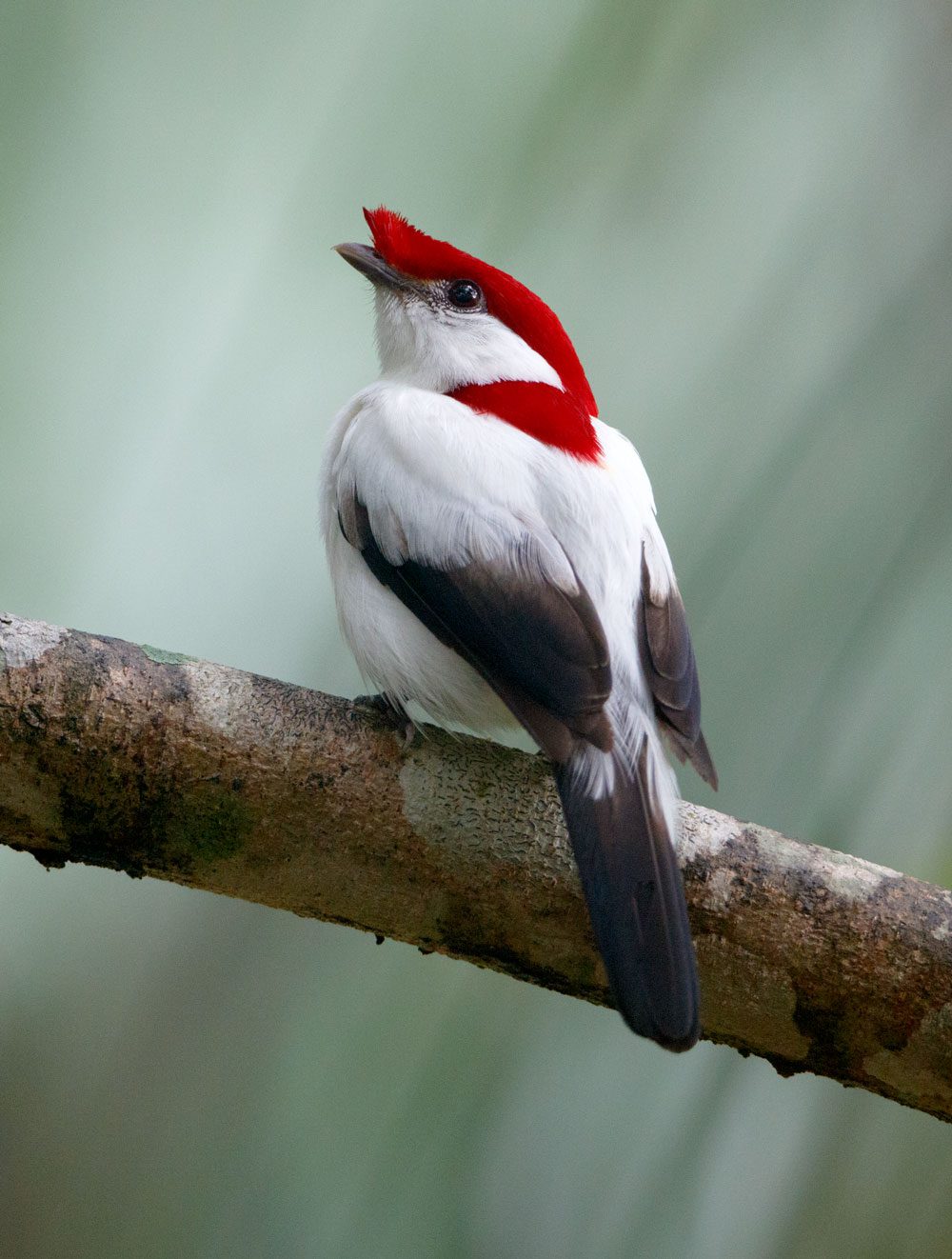
In two hours of hiking the levadas, I heard that friendly song of the soldadinho everywhere above me—Yoo-hoo! Toodle-toodle-oo! But my eyes couldn’t catch it, save for a few glimpses of something white flitting away. The forest was thick with other birds, though, and lots of surprises upon further investigation. A closer look at a dove-sized silhouette perched on a branch revealed a shimmering Blue-crowned Trogon with iridescent azure head. The splashing sound of rocks being tossed into the stream turned out to be a massive hummingbird: a Planalto Hermit—twice the size of a Ruby-throated Hummingbird—that was dive-bombing into the water, rising up to hang suspended and dripping in midair for a moment, then bombing into the water again.
Finally, a white flash zipped to a vine bridge suspended between two trees up in the canopy. I glassed it just long enough to see that brilliant red dragoon’s crest atop the little soldier’s head. With a hop he did an about-face on the vine, now facing me, and then—toodle-oo!—another white flash with a flap of his wings and he disappeared. The entire encounter lasted five seconds.
Not coincidentally, we were standing alongside a stretch of levada thick with overhanging plants. About half of the water from the Oasis springs is carried off the property via levada to local farms for irrigation; the other half is piped away. Aquasis’s plan for Oasis habitat rehabilitation calls for planting trees and allowing the levadas to grow over with vegetation, which the group says could increase the total area of Araripe Manakin habitat on the reserve by 20-fold. Aquasis also plans to re-engineer the cisterns near the springs with a more modernized setup that will be more water-efficient. (“No more leaks, like at Batateiras!” Campos says.)
“What we bought was a model, and now we want to show how it works.”
~ Alberto Campos
Campos predicts that the Oasis model of better-managed springs will ultimately increase the water flow available to people: “We can have water collection devices and water management devices. I think it will be more efficient, and I really believe that we can have more water in the lowlands than we have now. That’s something we will prove in maybe three or four years.”
Instead of protecting the Araripe Manakin by locking up habitat across the plateau, Aquasis is betting on this reserve as bird conservation that’s also water conservation.
“We don’t want to buy up all of the manakin’s springs throughout the range. That’s crazy,” Campos says. “What we bought was a model, and now we want to show how it works.”
Brito at the water management agency has provided the permits for Aquasis to re-engineer the waterworks at the Oasis springs, because he is eager to see this model succeed, with the hope that he can take it to other springs throughout the Araripe.
Were the model to be widely adopted, Campos says that even more water benefits would accrue as more Araripe Manakins and other fruit-eating birds resume their ecosystem roles as seed dispersers that propagate and maintain moist forests. More gallery forests would improve water retention across the plateau, through ecosystem services such as holding back flash-flooding.
It turns out that the people up in the hills who warned little boys 60 years ago not to shoot slingshots at the red-headed birds had it right all along. The soldadinho is the keeper of the water.
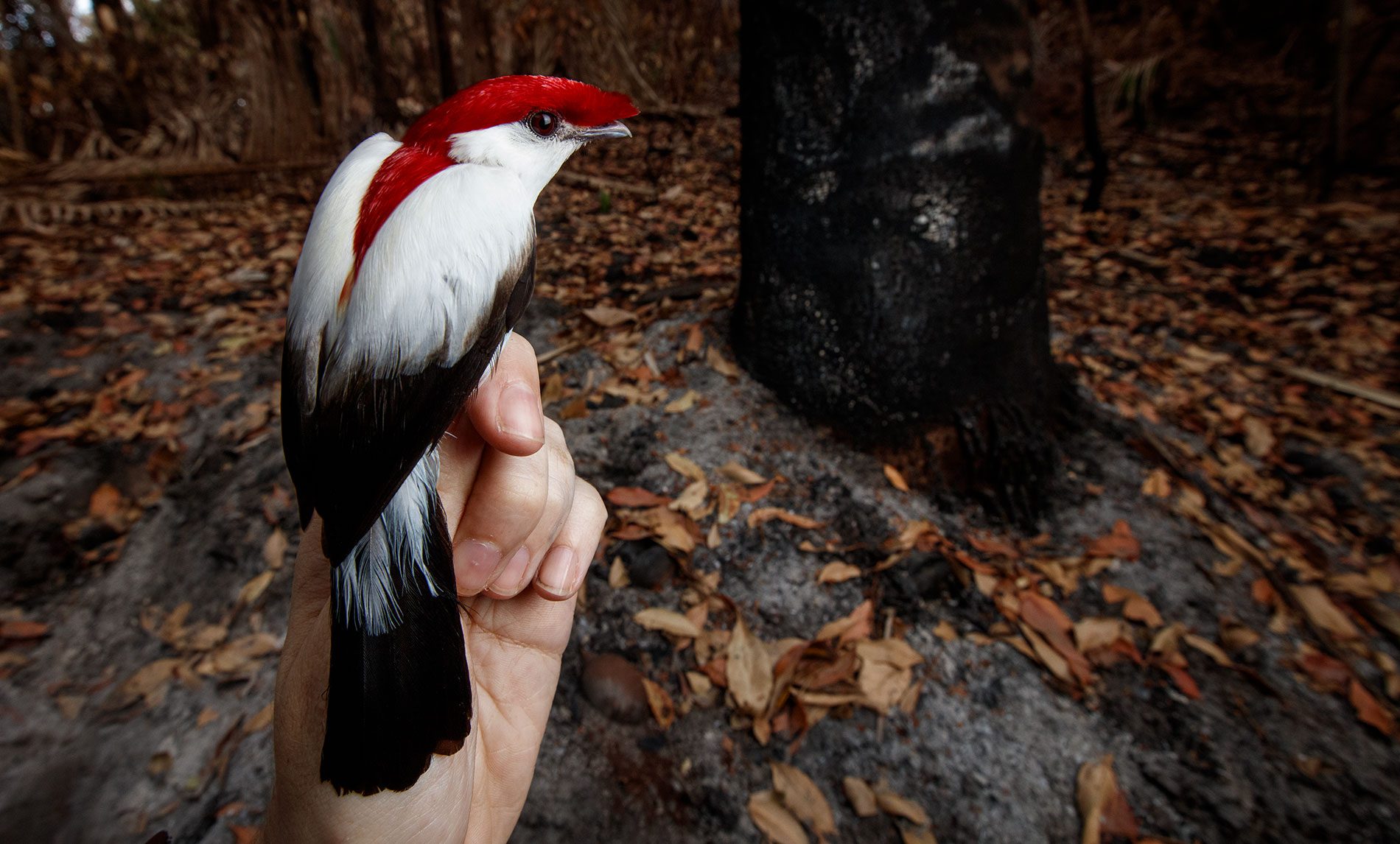
Minor Victories, Major Setbacks
Milene Gaiotti does not share the sunny optimism of Alberto Campos and Aquasis. A researcher from the Universidade de Brasilia who has studied genetics and conservation strategies for the Araripe Manakin for more than seven years, Gaiotti has seen too many of her research sites destroyed to have much hope for the future of the species.
In November 2015, Gaiotti arrived at her most prolific research site—a burbling spring where she had tagged more than 200 Araripe Manakins—to find it on fire.
“Araripe Manakins used to love to bathe there,” she said.
A nearby landowner had set a burn to clear brush, but it swept into a massive hillside fire. Gaotti could do nothing but watch her study site incinerate. She poured out her grief in a Facebook post that night:
Is with tears in my eyes that I write this … I meet the firemen now and there are six!!! SIX people with water bags controlling a huge fire … I’m devastated!
Across the manakin’s range—which is just those 30 miles on the side of the plateau where moist forest cover is increasingly being deforested and desiccated—the total population is estimated to be fewer than 800 birds. That’s based on surveys funded by Birdlife International’s Preventing Extinctions Programme and conducted by Aquasis’s Weber Silva in 2015–16. The surveys measured a 12 percent population decline among Araripe Manakins, when compared with previous surveys just two years earlier.
Dive deeper into Silva’s surveys, and the declines at each spring where Araripe Manakins breed is a litany of threats to the species. One site dropped from 27 to 20 birds due to fire; another dropped from 21 to 15 after a new housing development; and one site dwindled from five Araripe Manakins to only two, as more and more pipes suck the stream level dry.
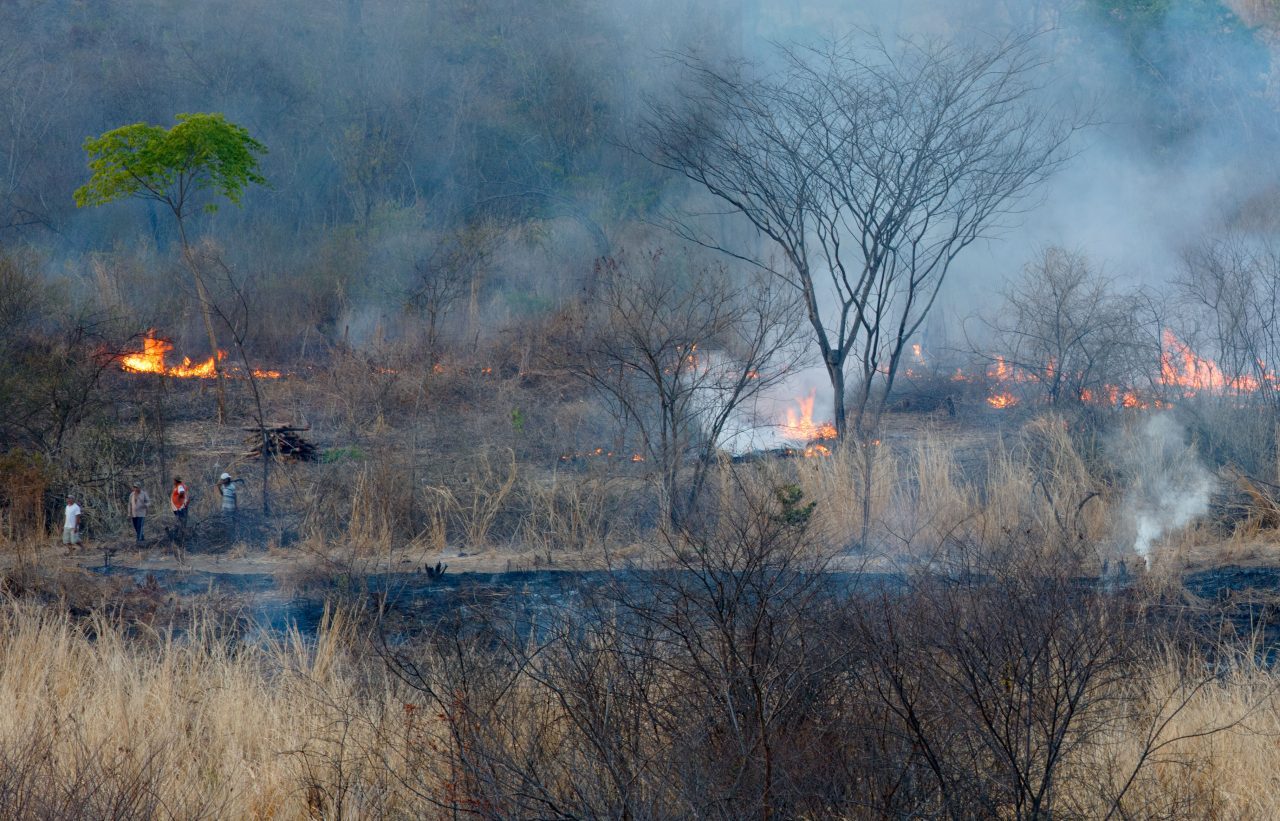
Now the most immediate threat to the species, according to Gaotti and Silva, is a gap that’s forming in the very middle of the Araripe Manakin’s range. There are four water springs within this gap, but the habitat has been degraded by clearing for cattle grazing and water piping. Only one manakin population is left in this 5-mile stretch. Should that population blink out, the scientists say, the contiguous distribution of the species along the plateau will be cut in two, with the stranded populations on either end at risk of genetic isolation—an accelerant toward extinction.
Aquasis is responding to these threats wherever and however it can. It hired private firefighters to augment the local fire brigade. It conducts awareness campaigns in communities near Araripe Manakin springs and consults with landowners on making accommodations for the birds. Nearly every week, Campos and Silva meet with one manner of government official or another about the conservation plight of the Araripe Manakin, continuously lobbying for help, even if their past experience has been like lobbying a cloudless sky for rain to relieve a drought.
There have been minor victories in working with government officials, often followed by major setbacks. In 2007 Aquasis conducted habitat surveys of the entire Araripe plateau and presented maps and a proposal to government leaders to fully protect the upper forested slopes of the chapada. The plan rapidly gained approvals at the local and state levels and seemed headed toward the creation of a fully protected area by the federal environmental minister at that time. But then an economic downturn struck, followed by turmoil and turnover in the federal government, and Aquasis’s plan was shelved.
It was that disheartening experience that caused Aquasis to shift strategies toward creating the Oasis Reserve as a model. But some Oasis neighbors, like people everywhere, are leery of change.
This place can be dangerous. There is violence. But this is why we are here.
~Weber Silva
After the reserve acquisition, Silva drew up a plan to renovate the spring’s cisterns and more efficiently distribute water into the levadas. He went to work building a small pilot project, a new pipe system to feed just one of the levadas. One day he arrived to see the entire system smashed up, the pipes ripped out.
Silva had been asking around on nearby farms for a worker he could hire to help him with his pilot project, and he guesses that’s how word got around that Aquasis was going to try something new with water management. Whoever ripped up the pipes didn’t even give it a chance to see how it would affect their water supply, good or bad. They wanted to destroy it as a new idea.
As Silva stood there looking at the smashed-up pipes, the farm laborer he had hired told him he was lucky. Then the laborer spoke of the time when, as a child, he watched his father back down from a water dispute at the barrel of a gun.
“This place can be dangerous. There is violence,” Silva told me with a discouraged sigh when recounting his experience. “But,” he said, fixing his eyes on me, “this is why we are here.”
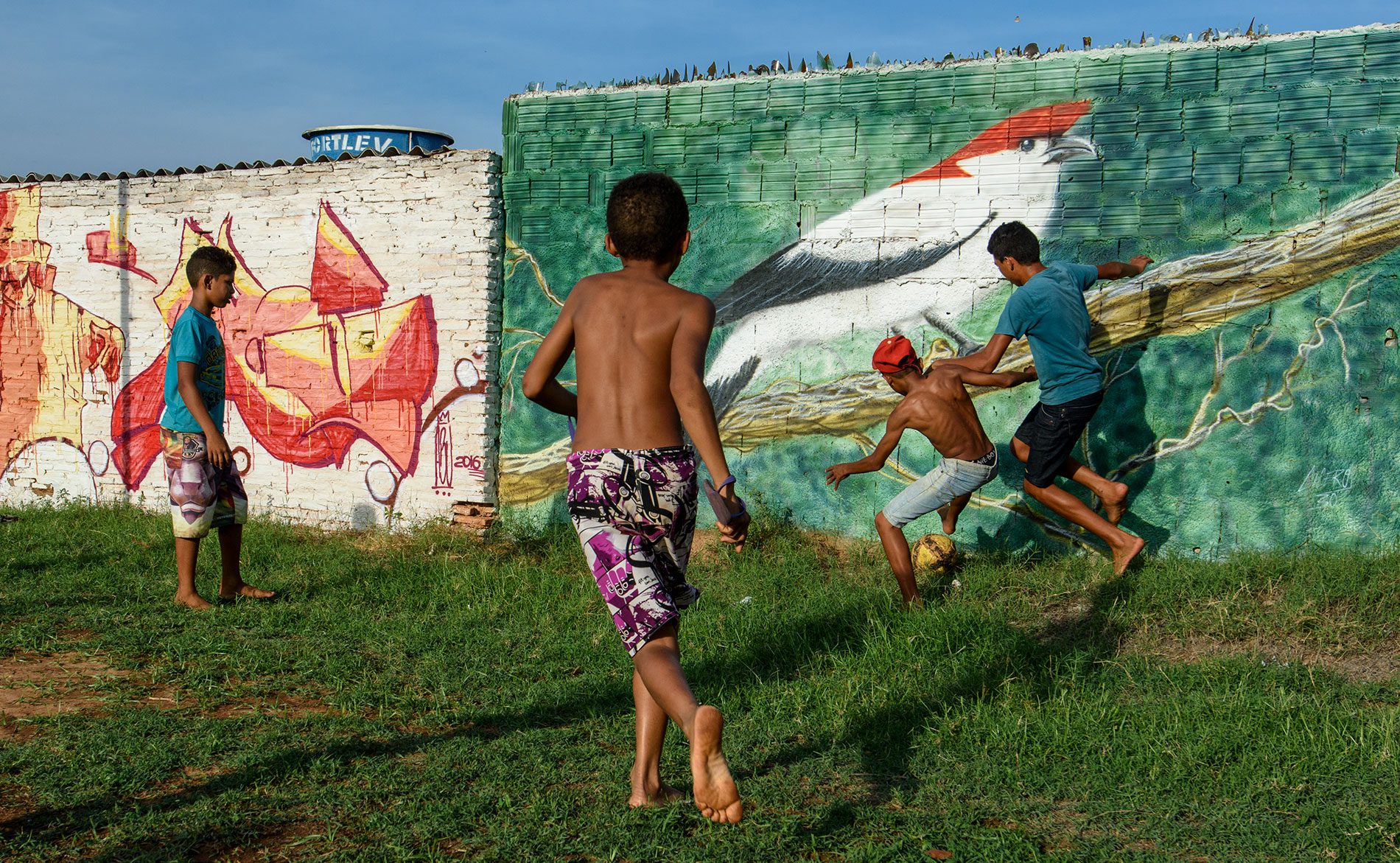
A Flame-Headed Spirit Becomes a Local Celebrity
On my last evening in Crato, I went downtown looking for a plate of feijoada, the Brazilian national dish of black bean and pork stew. As I walked the city’s plaza, poking into this restaurant and that, there were Araripe Manakins everywhere.
A soldadinho made of decorative ceramic tiles at the entrance to an ice-cream shop. An Araripe Manakin decal perched on the door of a cab at the taxi stand. A tribute to O Soldadinho in a mural on the side of a coffee shop.
Ten years ago Aquasis launched a community pride PR campaign for the bird. The city’s tourism department picked up on it and anointed the manakin as an official cultural symbol of Crato. Now this flame-headed spirit of the Araripe spring waters has taken flight in the folk songs strummed in the streets and the street art that shows up overnight on walls. The image of an Araripe Manakin has even been pirated to appear on a billboard promoting a new housing development, the very kind of sprawl that is encroaching on the bird’s habitat.
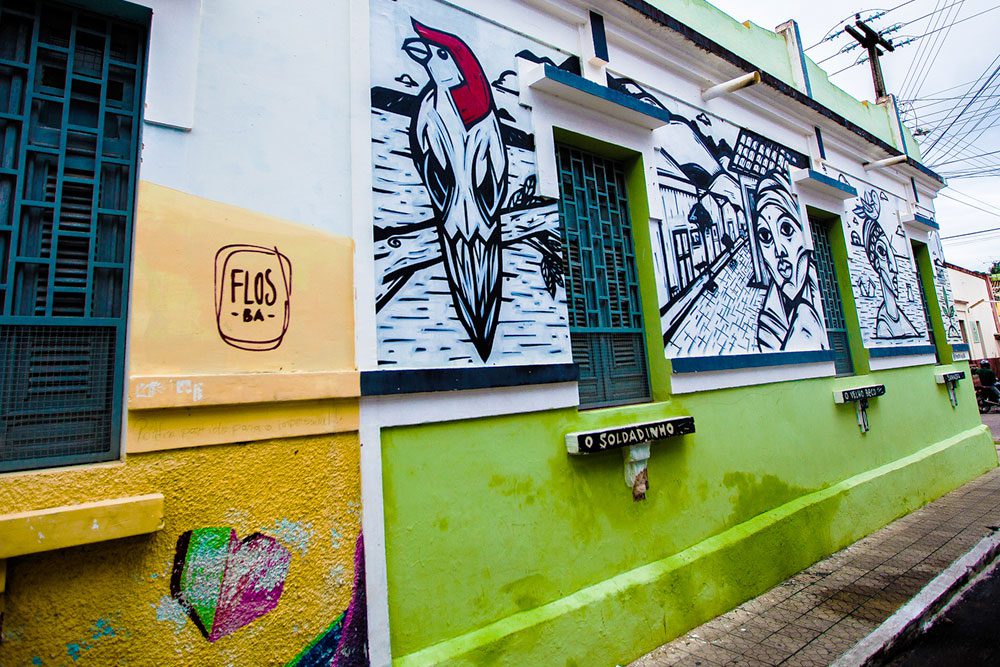
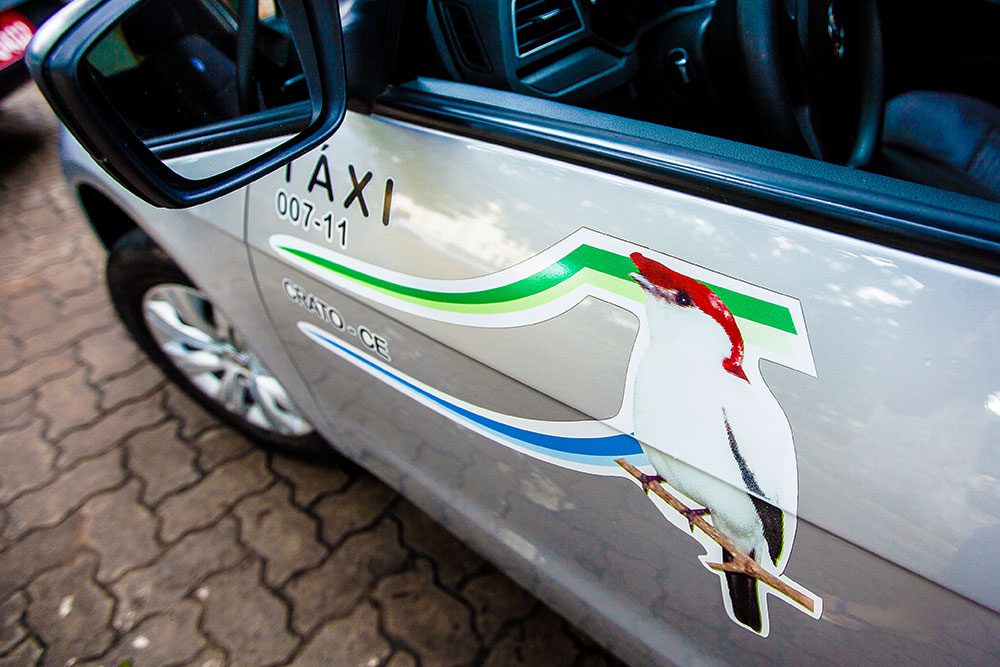
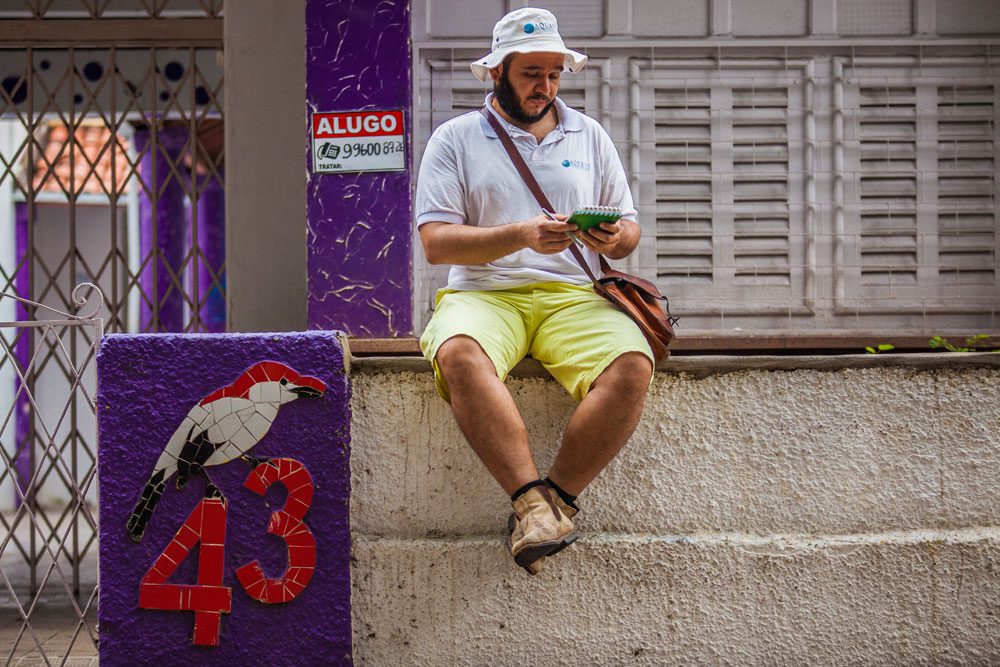
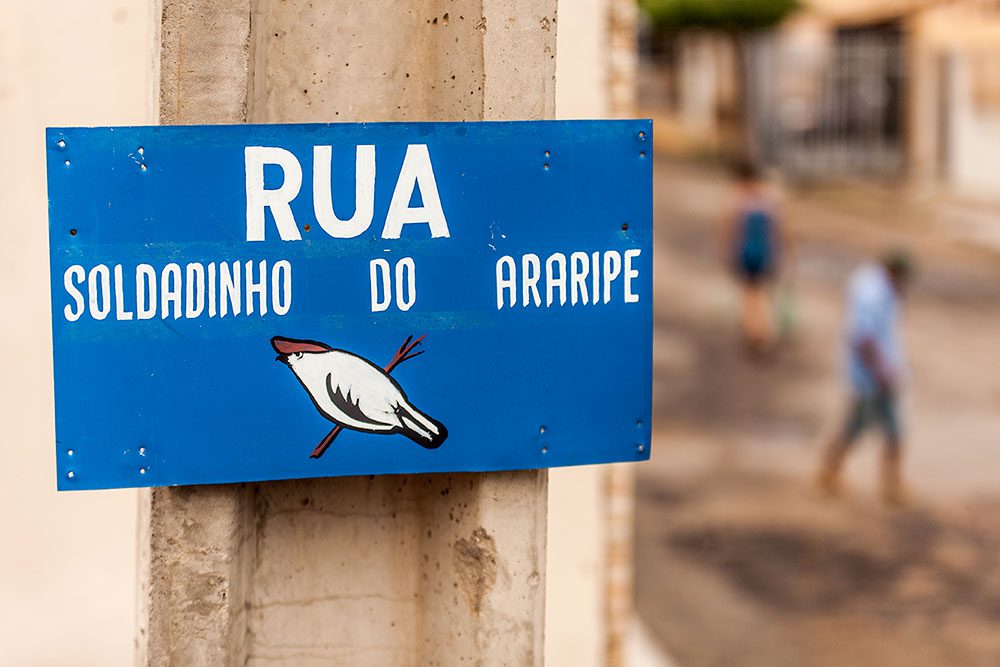
Alberto Campos acknowledges that there is a gap between cultural awareness and people’s actions.
“Ten years ago, nobody knew what an Araripe Manakin was. Now, it’s a local celebrity,” he says. “But just as it took 10 years to make people aware of the manakin, it will take another 10 years to make people change their attitudes and behaviors, change their practices to conserve the forest and the water.”
And so the work goes on for Campos, who says: “I used to be a field biologist, then I became a conservation biologist. Now I feel like I’m a political scientist.”
His comrade Weber Silva has served on 10 planning commissions for various jurisdictions. Silva continues to fly to Brasilia, the country’s capital, every few months, as he has restarted talks about a federal fully protected area in the Araripe plateau.
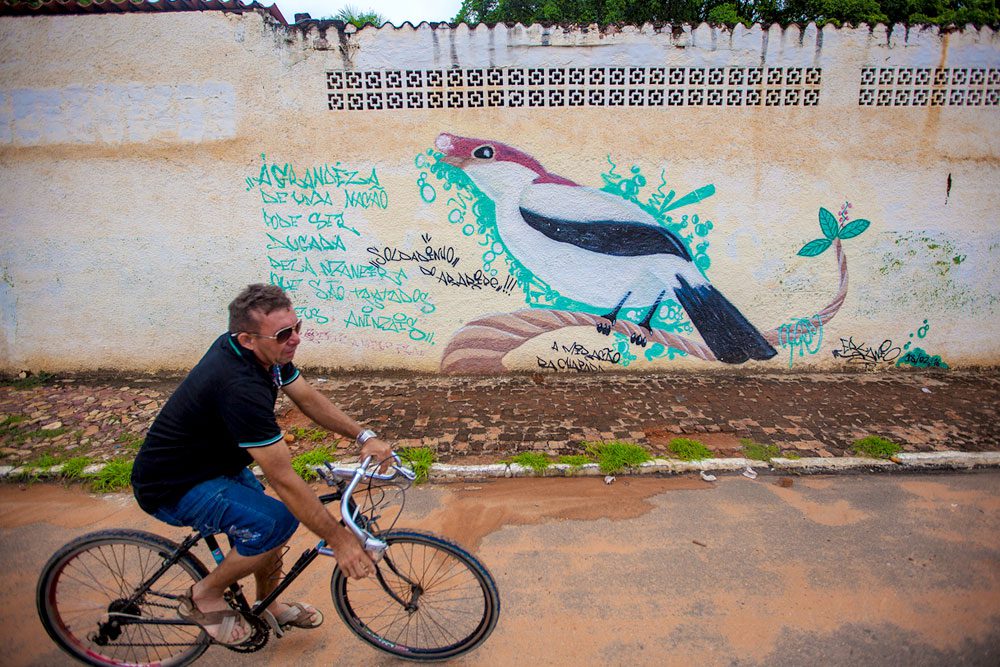
In the city of Crato, there is a new mayor and a new regime. Aquasis and Yarley Brito, the water management agency president, worked with the new Crato environmental minister to create a municipal protected area that will encompass springs and habitat for more than 40 percent of the current Araripe Manakin population. The environmental minister has also pledged to grow the firefighting force, and address the rampant piping of water at the city’s springs.
Campos is encouraged, but wary.
“I don’t count much on politician’s promises anymore,” he said.
Silva is not satisfied: “What we have done until now, I consider a significant amount of work, but it is still not enough to free this species from its fate of extinction within the next 15 years. I believe it is possible to save it, but it will be necessary to do a lot more.”
This past December Silva marked the 21st anniversary of the day he discovered the Araripe Manakin for science. He is 42 years old, and he has been working to save the bird every day since he saw its head light up like a roaring fire, which is to say exactly half of his life. He is a man haunted by the past, who feels compelled to make a future for Soldadinho do Araripe.
“Once someone asked me if I felt special or predestined for having discovered a new bird species,” he says. “It’s quite the opposite. I have always asked myself: ‘What do I have to do in order to live up to this honor, to actually deserve to have discovered this species?’”

All About Birds
is a free resource
Available for everyone,
funded by donors like you
American Kestrel by Blair Dudeck / Macaulay Library
